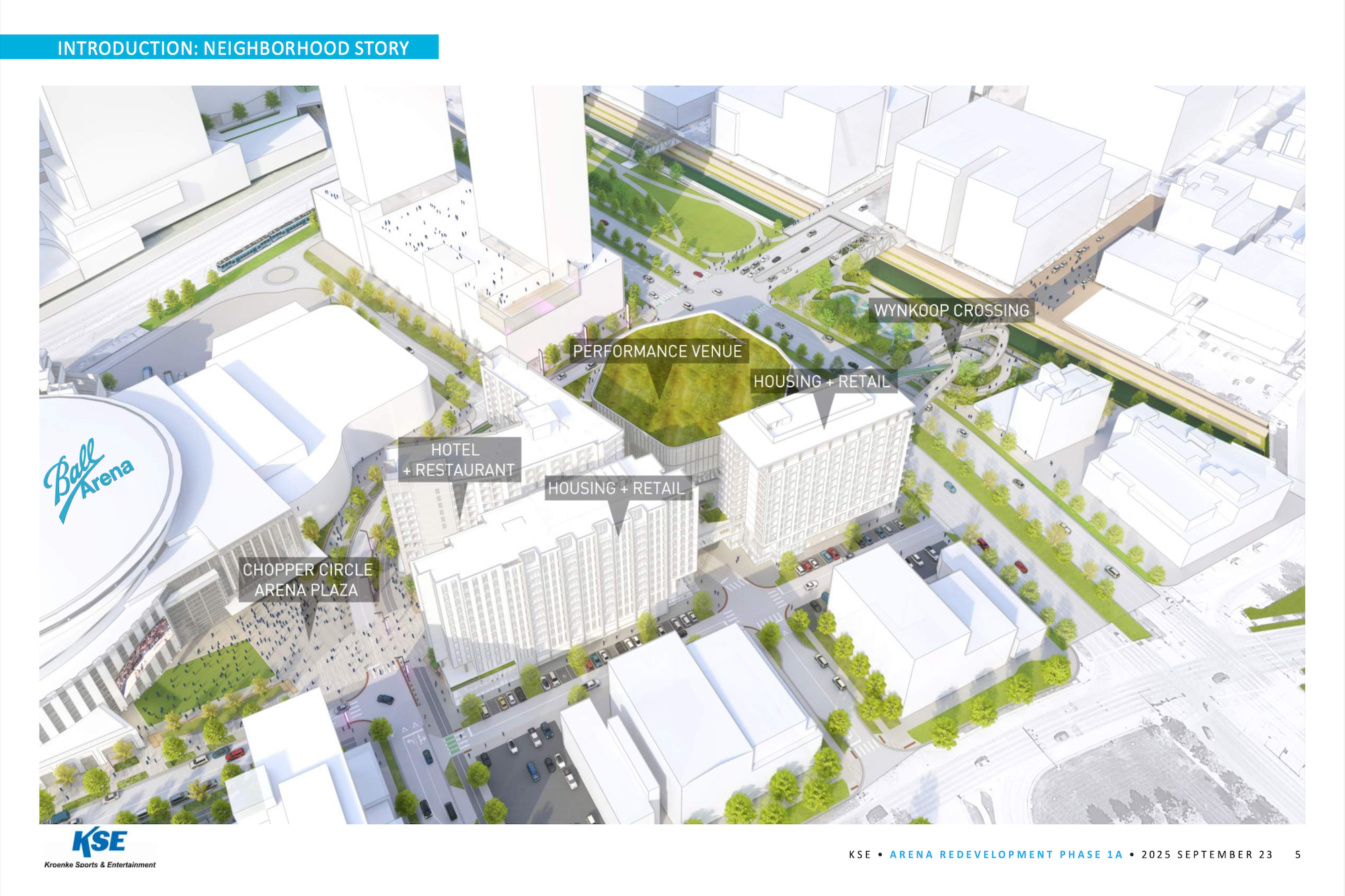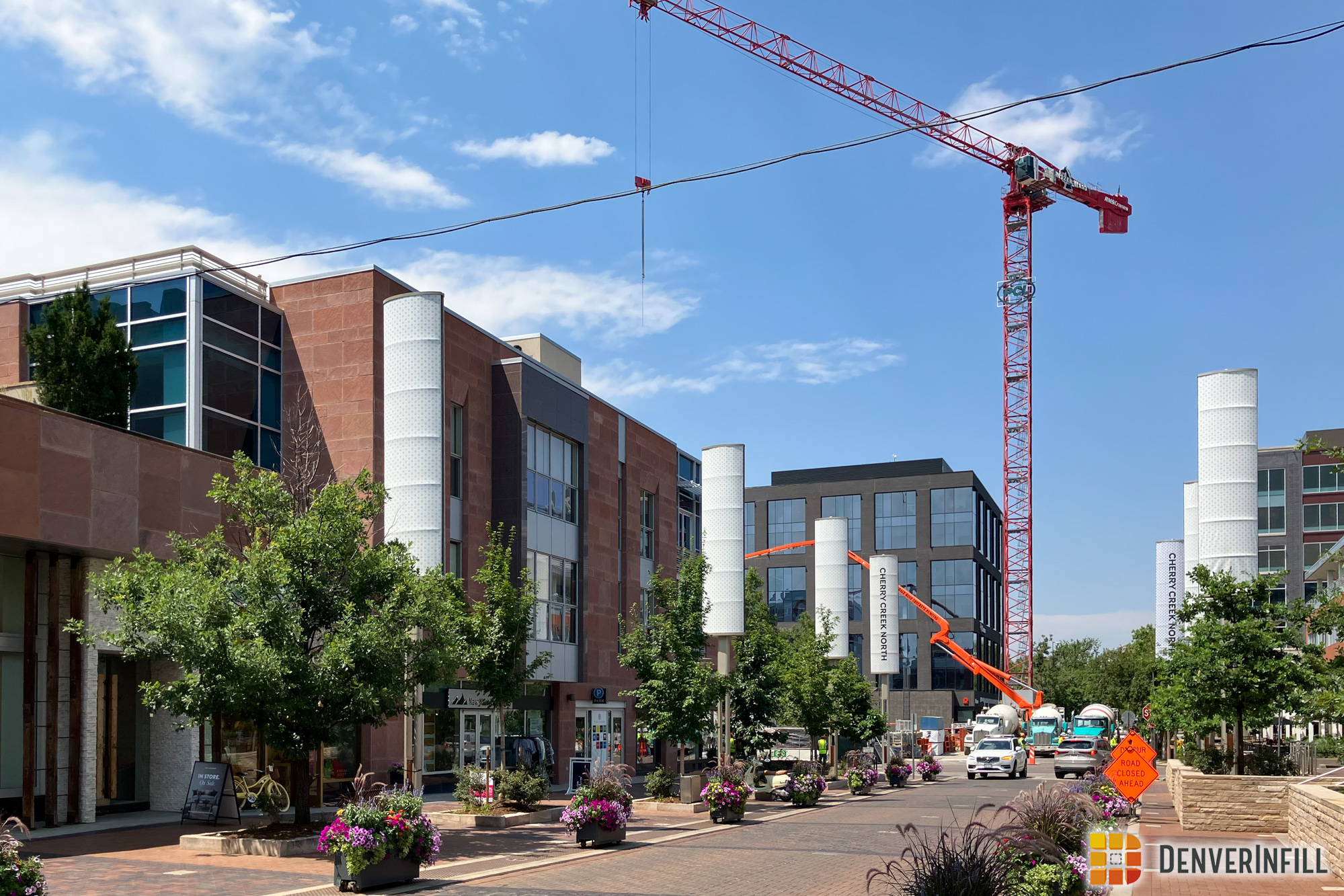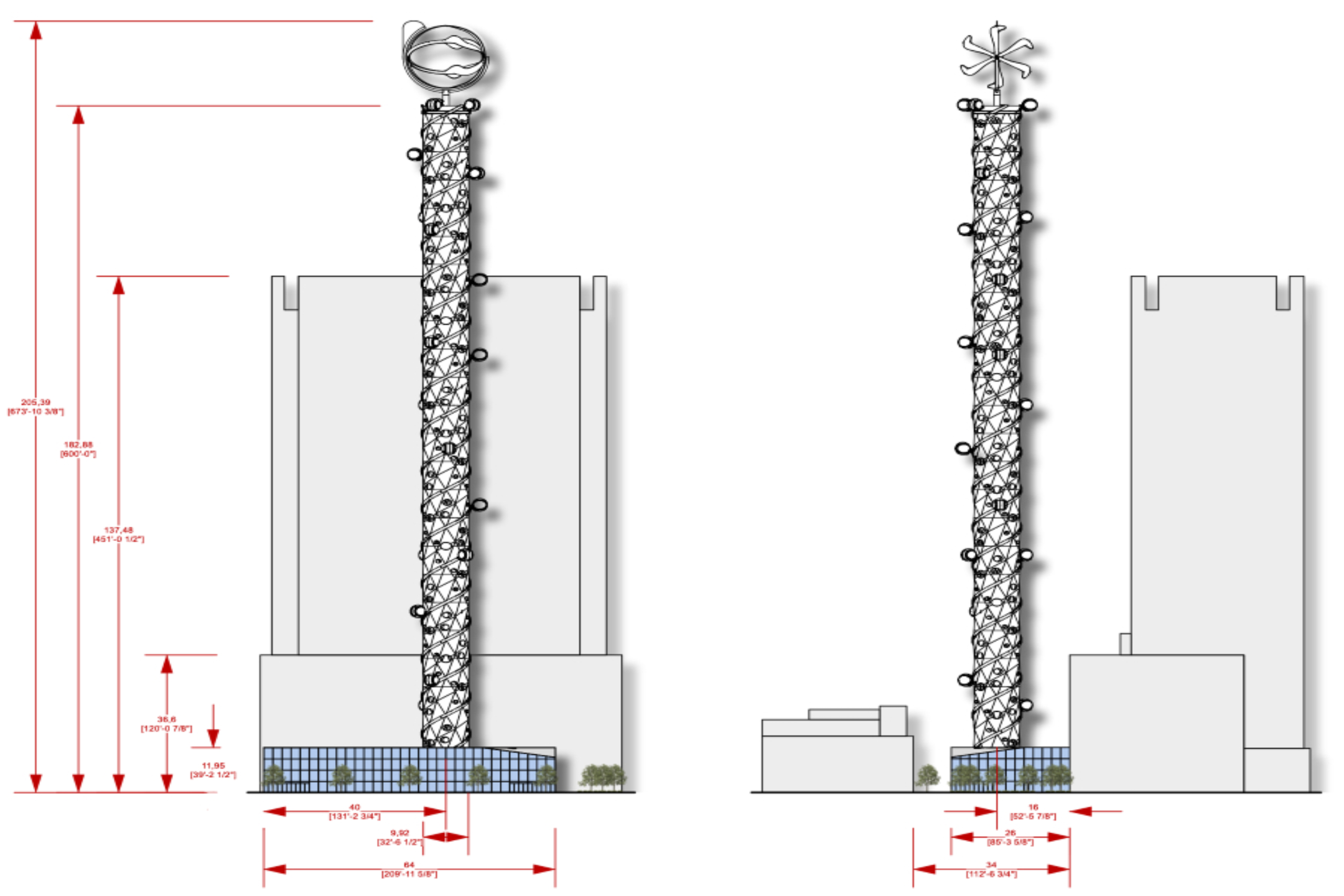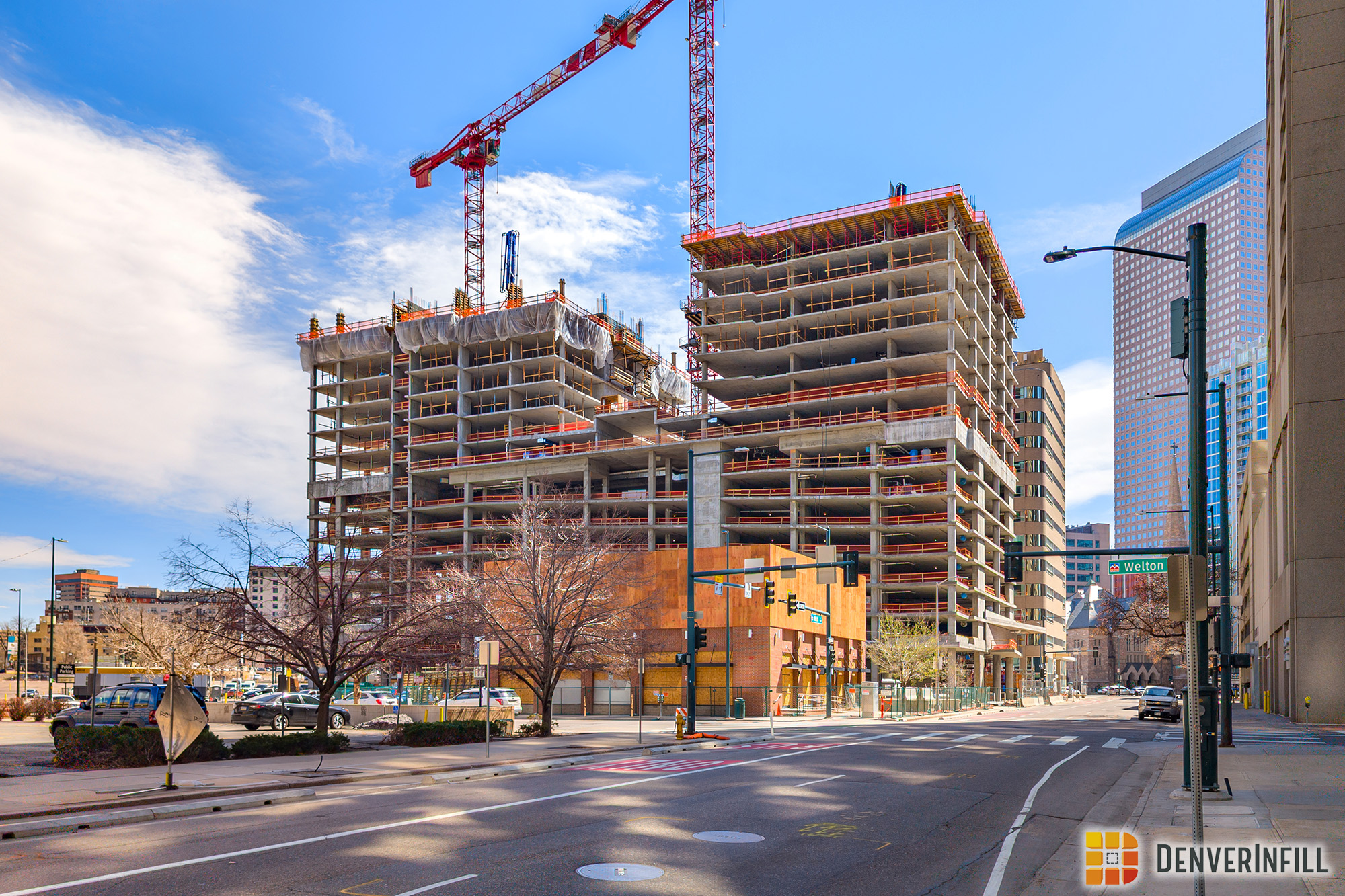There’s been a project planned for a while now for the corner of Zuni and Caithness Place in Highland that’s been referred to as the “CorePower Yoga Apartments” (since CorePower Yoga will be the main commercial anchor). I’m pleased to learn that the project is now ready to break ground and has an official name: Highland Park. The project will feature 126 rental units, plus the commercial space, in a four-story building. Best of all, the project will replace a thoroughly awful strip mall that is horribly out of character for this urban and nicely densifying historic area. Here’s an aerial from Bing Maps of the site:
and here’s a rendering of the project. OZ Architecture of Denver, Inc., did the design:
To give you all the details about the project, I’ll refer you John Rebchook’s blog InsideRealEstateNews.com, where John has just posted two excellent articles about this project, here and here.
The proposed building appears to be perfectly in scale with all of the beautiful historic block buildings and other new infill projects in the area, and also seems compatible architecturally with the district’s predominant use of brick. This is a fine addition to Denver’s urban core and a hopeful sign that the worst of the economy is behind us.













North is down in the Bing Maps drawing. I was really confused at first.
Correct, Chad. Sorry, I should have mentioned the direction of view.
I think it’s fairly presumptuous to say that the strip mall is “highly out of character” for highlands. It has been there for decades longer than the majority of the white yuppies that now inhabit a good portion (though NOT all) of Highlands, and frankly, it caters to the community that existed before gentrification began. I know there are a few empty units, but for the most part that strip mall is made up of small, unique groceries and services.
I’m sorry that your aesthetic sensibilities are offended by it, but I will take one carniceria over another yoga shop and another set of condos that look like they are made out of lego blocks. The lower highlands has been taken over by this absurd style of cookie-cutter architecture (I like to think of it as yuppie bauhaus)and will look horribly dated in a decade. But you know, even with the atrocious architecture, I’d be fine with it, if any of these new developments offered smaller, more affordable commercial spaces that could enable small businesses to continue operating, in new settings, in their old neighborhoods.
Excellent point, Daniel.
‘“CorePower Yoga Apartments” (since CorePower Yoga will be the main commercial anchor)’
Thank God! There certainly aren’t enough of this chain around town!
Ugg.
Awesome Post! I have lived in the “highlands” for about 12 years now and grew up in cap hill. I have seen little strip malls like this in all parts of Denver my whole life. I also agree that I would rather have a nice ma and pa Mexican restaurant instead of a corepower or garbonzos craptastic chain. Living in the city my whole life I can tell you that suburban chains and dated architecture is “horribly out of character” for any urban area.
The comments about cookie-cutter architecture and chain restaurants could not be more dead-on.
A very interesting read about infill, public-private partnership and sustainable transportation infrastructure.
http://www.washingtonmonthly.com/features/2010/1011.doherty-leinberger.html
hi daniel – some intereting comments…a couple things to keep in mind:
– lower highlands has been a changing neighborhoo for over 100 years..it was irish, german, chinese, italian, mexican, artsy, and most recently yuppies moving in. there will probably be another group moving in next (most likely east african or eastern europe based on recent trends)…my point is that urban neighboroods change a lot and a good mix makes it feel dynamic.
– my favorite taco stand is in that little strip mall…
– nevertheless, there are plenty of other small, older, less expensive storefronts in the neighborhood so the businesses can always relocate.
bryan
What I don’t like about the current space is the huge parking lot that is in that space and I am assuming that and not the businesses is what Ken was referring to when he said it was out of character. If they could find a way to keep the current businesses for economic and cultural diversity and get rid of a large surface lot that would be ideal but it’s hard to develop new buildings and retain the same tenants.
Judging by the neighborhood and how that used to be a more transit oriented neighborhood with a streetcar running just north of there along 32nd I am guessing someone tore something down at some point to put in the strip mall. Likely after the streetcars stopped running in 1950.
Do not like the continued gentrification of the highland(s) but I can at least understand it being done in the elimination of a significant chunk of surface parking which is an extremely inefficient use of land in an urban environment.
You all make good points. I fully realize that cities are constantly evolving in terms of demographics, land usage, etc. and that this strip mall is both an inefficient space and, obviously, did not exist at the beginning of time.
But I do think that as a city we should have clear cut goals and expectations for our city. Do we want the lower classes and ethnic communities that have contributed so much to Denver booted out to the suburbs in favor of high priced low rise condos and yoga chains? Even if the land use is more efficient? I’m guessing not.
And I don’t think that it has to be a one-or-the-other proposition. Besides the race/socio-political implications of gentrification, as advocates for smarter urban development we need to always keep livability in mind. Much is made on this blog about so-called ‘reverse white flight,’ the demographic shift of young, affluent whites from the suburbs back into the cities. This is happening because white kids are yearning for the benefits of city living that the suburbs cannot match. They want culture, they want diversity, they want community. They want the ability to walk from their homes to groceries, bars, unique shops, restaurants, liquor stores, etc. etc. They want the ability to patronize small businesses that don’t exist anywhere else, businesses that make a city unique and offer alternatives from bland, homogeneous corporate chain culture.
What I see in developments like this is the attempt to turn the city into everything that city dwellers despise about the suburbs. Chain business that can be found in the exact same form in dozens of other places: check. Bland, cookie cutter architecture: check. Residential properties that insure a lack of economic diversity: check. Less walkable services: check.
I know one new development and a few less small businesses in one area does not equal the end of the world. I just think we should be expecting more from the infill of our Denver.